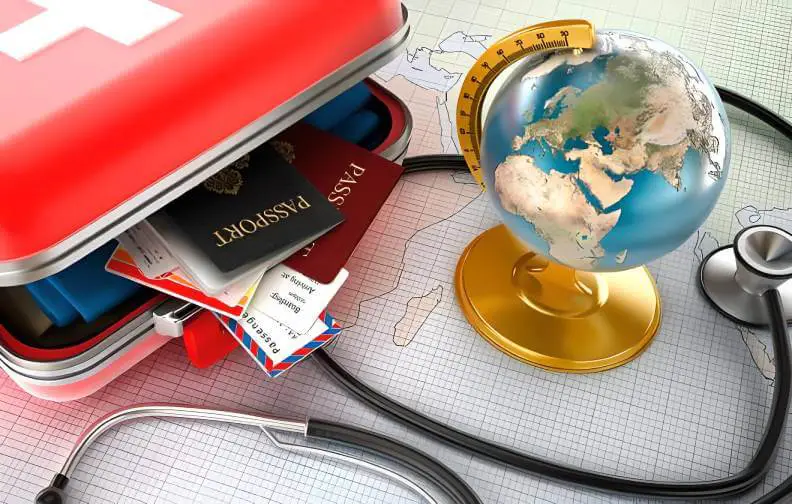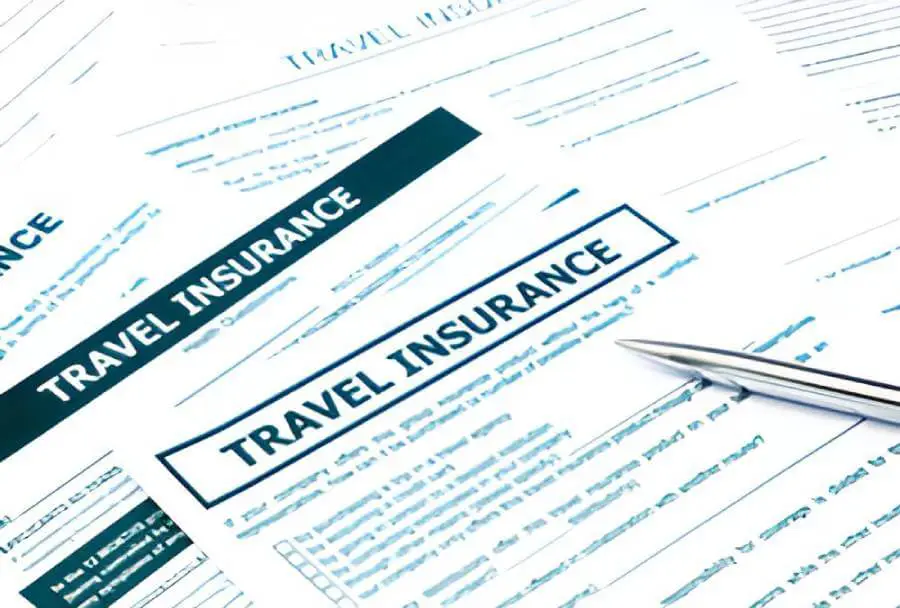Maybe you’ve never used travel insurance before. Or maybe you’ve just purchased travel insurance, and now you’re scrolling through your policy documents, wondering what it all means. We’re here to help!
This guide explains the basics: how travel insurance works, how to choose a plan, and how to get the most out of your coverage.
What is travel insurance?
When you’re planning your next adventure, one thing you shouldn’t overlook is travel insurance. But what exactly is travel insurance? Simply put, it’s like having a safety net for your trip—a backup plan for when things don’t go as expected.
Travel insurance cover takes care of a bunch of things, like medical expenses if you get sick or hurt while you’re away, or even covering costs if you need to cancel your trip unexpectedly. It’s there to give you peace of mind so you can focus on enjoying your travels without worrying about what might go wrong.
Medical cover is a big part of travel insurance. It means you’re covered for medical treatment if you fall ill or have a pre-existing condition that acts up while you’re traveling. And if you need to be evacuated for medical reasons, your insurance has got you covered there too.
But it’s not just about medical stuff. Travel insurance also covers things like lost luggage, delays, and missed departures. It’s like having a safety net for your whole trip, so you can relax and enjoy yourself without stressing about the what-ifs.
Of course, it’s important to read the fine print and understand exactly what your policy covers. Different policies offer different levels of cover, so it’s worth taking the time to find one that suits your needs and budget.
What does trip insurance cover?
Many policies usually include various trip protections like accidental death and dismemberment, emergency medical coverage and evacuation, pharmacy drugs, and additional aspects. Let’s delve deeper into each component.
Flight delay
Trip delay coverage includes compensating for expenses related to transportation, meals, or accommodation if your transportation provider faces delays. It also reimburses any prepaid and nonrefundable costs incurred. This coverage becomes active after a specified waiting period, typically between five to 12 hours, as outlined in the policy.
Lost baggage
Insurance for baggage loss covers the reimbursement for your suitcase and its contents if your checked bag is lost, stolen, or damaged during a covered trip. This compensation applies in the event of such occurrences during your travels.
Health care expenses

Health care expenses coverage in travel insurance is a crucial aspect, ensuring financial protection in unforeseen medical situations during trips. This coverage typically encompasses hospital costs, doctor visits, prescribed medications, and emergency medical treatments required while traveling.
Doctor visit
A doctor visit coverage in travel insurance ensures financial assistance for sudden injury or illness that necessitates medical attention while traveling. This coverage often includes expenses related to consultations, examinations, and treatments provided by a physician during the trip.
Pharmacy drugs
Pharmacy drug coverage in travel insurance pertains to the reimbursement or direct coverage of prescribed medications required due to sudden illnesses or injuries during the trip. This coverage often includes eligible pharmacy expenses, ensuring travelers have access to necessary medications while away from home.
Pre-existing conditions
Pre-existing conditions coverage within travel insurance often extends to acute onset situations related to existing medical conditions. While not all plans cover medical condition, some may offer protection for sudden and unforeseen exacerbations or complications of these pre-existing ailments during the trip. It’s crucial for travelers to review and understand the terms and limitations of pre-existing condition coverage in their insurance policies. This coverage serves as a safety net for unexpected medical incidents stemming from existing health conditions while traveling.
Medical evacuation
Medical evacuation coverage in travel insurance addresses the expenses associated with transporting a traveler to the nearest suitable medical facility or repatriation to their home country in the event of a severe medical emergency or injury during the trip. This coverage often includes the costs of medically necessary transportation, such as air ambulance services or medically equipped flights, ensuring prompt and safe access to specialized medical care when needed.
Repat of remains
Repatriation of remains coverage in travel insurance deals with the expenses related to transporting a deceased traveler’s body to their home country in case of an unfortunate demise during the trip. This coverage typically encompasses the costs associated with preparation, handling, and transportation of the deceased individual back to their place of residence or for funeral arrangements.
Personal Liability
Some travel insurance policies offer coverage for personal liability, protecting you in case you accidentally cause damage to property or injure someone else while traveling.
High-Risk Activities
Depending on the policy, travel insurance may offer coverage for certain high-risk activities such as skiing, scuba diving, or skydiving, ensuring that you’re protected even when engaging in adventurous pursuits.
COVID Cover
In response to the ongoing COVID-19 pandemic, some travel insurance providers now offer coverage related to COVID-19, including medical rates, trip cancellation, and interruption due to COVID-related reasons.
What does travel insurance not cover?
Travel insurance policies generally have exclusions or limitations that are important to consider:
Pre-existing Medical Condition: Most travel insurance policies exclude coverage for medical conditions unless specified otherwise. This means that any medical expenses related to pre-existing conditions may not be covered unless explicitly stated in the policy.
Adventure sports, winter sports, and potentially hazardous activities like climbing or white-water rafting are typically not included in standard travel insurance. Extra cover might be needed for such activities.
Costly or luxurious items such as watches, jewelry, laptops, and cameras are often excluded from coverage due to their potential value surpassing the ‘single article’ price limit specified in the policy.
Intentional Acts: Travel insurance typically does not cover expenses resulting from intentional acts or reckless behavior, including drug abuse or damaging property intentionally.
Civil Unrest: While travel insurance may cover trip cancellation or interruption due to unforeseen events, civil unrest or political instability in your destination may not always be covered.
Missed Departures: If you miss your departure due to reasons within your control, such as oversleeping or being stuck in traffic, travel insurance may not provide coverage for the expenses incurred as a result.
Policies Vary: It’s essential to read the fine print and understand the specific terms and conditions of your travel insurance policy. Coverage exclusions and limitations can vary significantly between insurance providers and policies.
Covid Cover: While some travel insurance policies may offer coverage related to COVID-19, including medical expenses and trip cancellation due to COVID-related reasons, not all policies include this coverage. It’s essential to check whether COVID cover is included in your policy.
Understanding what travel insurance does not cover is just as important as knowing what it does cover. By being aware of these exclusions and limitations, you can make informed decisions and ensure you have the appropriate coverage for your travel needs.
Always review your policy details and exclusions to understand precisely what your insurance covers and what it doesn’t.
Picking the Right Policy for Your Trip
Choosing the appropriate insurance policy for your journey relies on several factors such as trip duration, age, and destination, all impacting the policy cost. Additionally, coverage types, limits, and their interplay affect the overall pricing.
Analyzing Policy Specifics
Carefully examining the specifics of each travel insurance policy is paramount in comprehending the extent of coverage it provides. It’s crucial to meticulously scrutinize the policy details, including the types of coverage offered, any limitations and exclusions outlined, and how these align with the associated costs. Understanding these specifics ensures that you select the most suitable coverage for your travel needs and financial circumstances.
Single Trip vs. Annual Plan
For frequent travelers, opting for an annual travel insurance plan often proves more cost-effective than purchasing separate single-trip policies. These multi-trip plans offer coverage for multiple journeys throughout the year, whether they are lengthy international trips or shorter domestic ones. By providing year-round peace of mind, travelers can save money while enjoying comprehensive protection.
However, it’s essential to be aware of the limitations of multi-trip policies. While they offer convenience and potential cost savings, they may come with lower coverage limits and exclusions. For instance, they might not provide comprehensive coverage for medical conditions or offer limited personal liability cover.
When considering a multi-trip policy, travelers should carefully review the policy wording to understand what is covered and any limitations that may apply. While these policies typically include coverage for emergency medical expenses, specialist medical treatment and evacuation, the extent of coverage may vary significantly between insurance providers.
Additionally, travelers should pay attention to other aspects of coverage, such as personal belongings protection, trip cancellation cover, and coverage for non-medical emergencies like lost luggage or delayed departures. While multi-trip policies offer convenience and potential cost savings, travelers must ensure that the policy meets their specific needs and provides adequate protection for unforeseen circumstances that may arise during their travels.
Individual vs. Family Coverage
When obtaining quotes for , it’s crucial to include all individuals traveling in your group, along with their ages. Some insurance providers may offer complimentary coverage for children under 18 if a parent is the primary policyholder. This ensures that every family member are adequately covered for your trip, providing peace of mind and protection against unexpected emergencies or cancellations. Don’t overlook this important detail when securing insurance for your family’s travels.
Considerations to ponder when purchasing travel insurance
- Be honest about your medical history
- Review the fine print thoroughly
- Consider coverage, not solely cost
- Be cautious of the deductible
- Ensure you’re aware of your coverage ceilings

Conclusion
Сomprehensive travel insurance cover provides essential protection for travelers, including medical expenses, coverage for personal belongings, and personal liability cover. It may also include cancellation cover for nonrefundable trip costs and offer specialized cover for activities like skiing. Overall, travel insurance ensures peace of mind during trips, safeguarding against unexpected expenses and emergencies.










